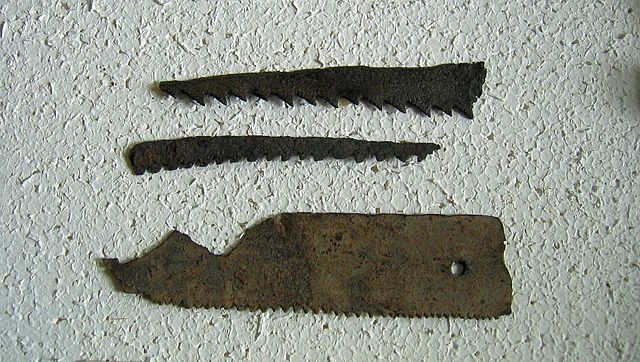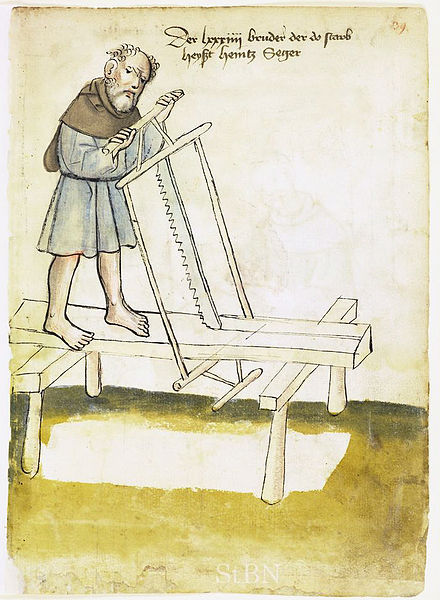A bandsaw is a power saw with a long, sharp blade consisting of a continuous band of toothed metal stretched between two or more wheels to cut material. They are used principally in woodworking, metalworking, and lumbering, but may cut a variety of materials. Advantages include uniform cutting action as a result of an evenly distributed tooth load, and the ability to cut irregular or curved shapes like a jigsaw. The minimum radius of a curve is determined by the width of the band and its kerf. Most bandsaws have two wheels rotating in the same plane, one of which is powered, although some may have three or four to distribute the load. The blade itself can come in a variety of sizes and tooth pitches, which enables the machine to be highly versatile and able to cut a wide variety of materials including wood, metal and plastic.
A small portable bandsaw. No blade is installed.
Students maneuver a large laminated board through a bandsaw together
Horizontal bandsaw resawing planks at a boatyard in Hoi An, Vietnam
Larger resaw at a Mekong delta boatyard, fitted with a 150 mm (6") blade
A saw is a tool consisting of a tough blade, wire, or chain with a hard toothed edge used to cut through material. Various terms are used to describe toothed and abrasive saws.
Roman sawblades from Vindonissa approx. 3rd to 5th century AD
Bronze-age saw blade from Akrotiri, late Cycladic period c. 17th century BC
Saw grinding in Sheffield, 1860
Rip sawing c. 1425 with a frame or sash saw on trestles rather than over a saw pit








